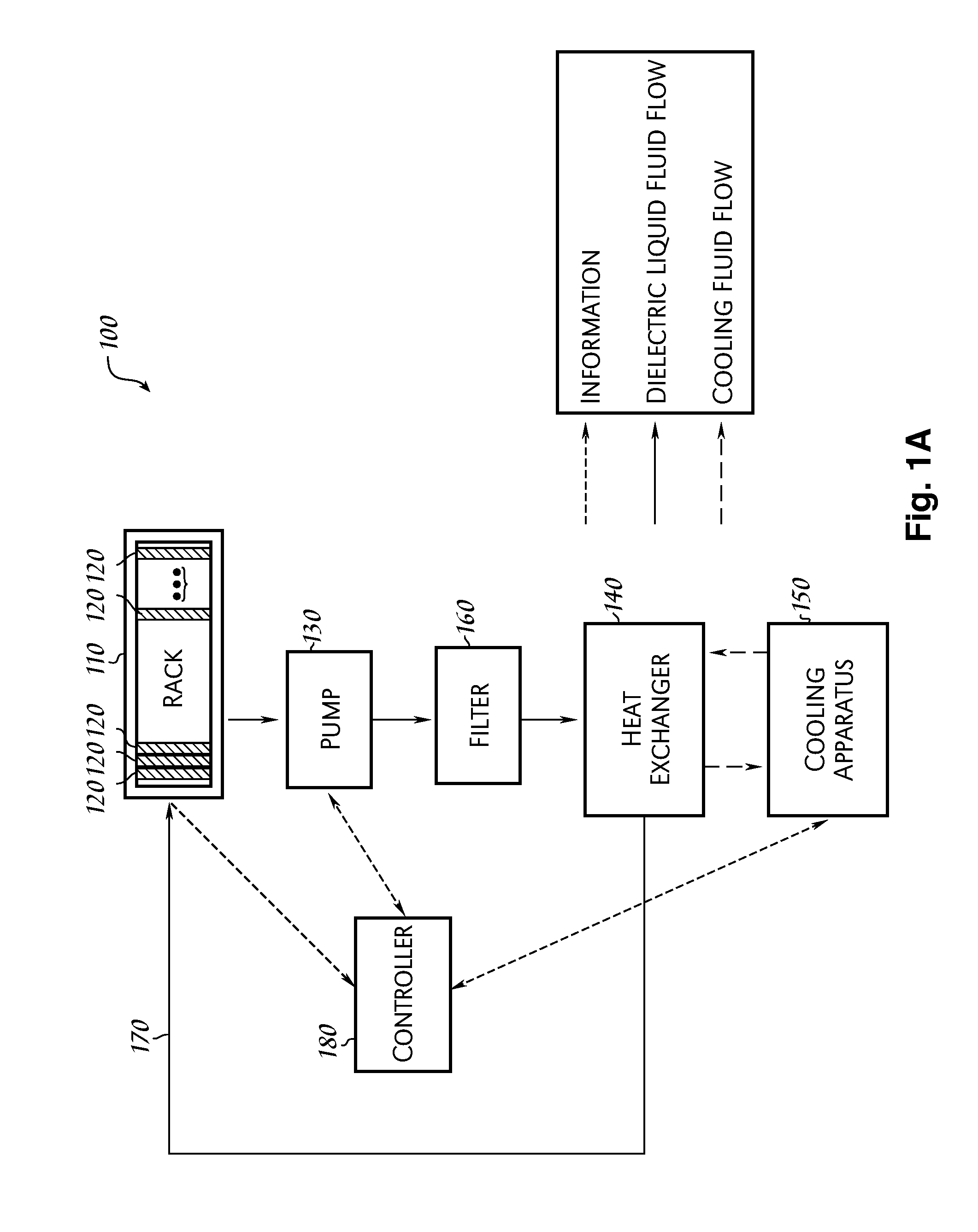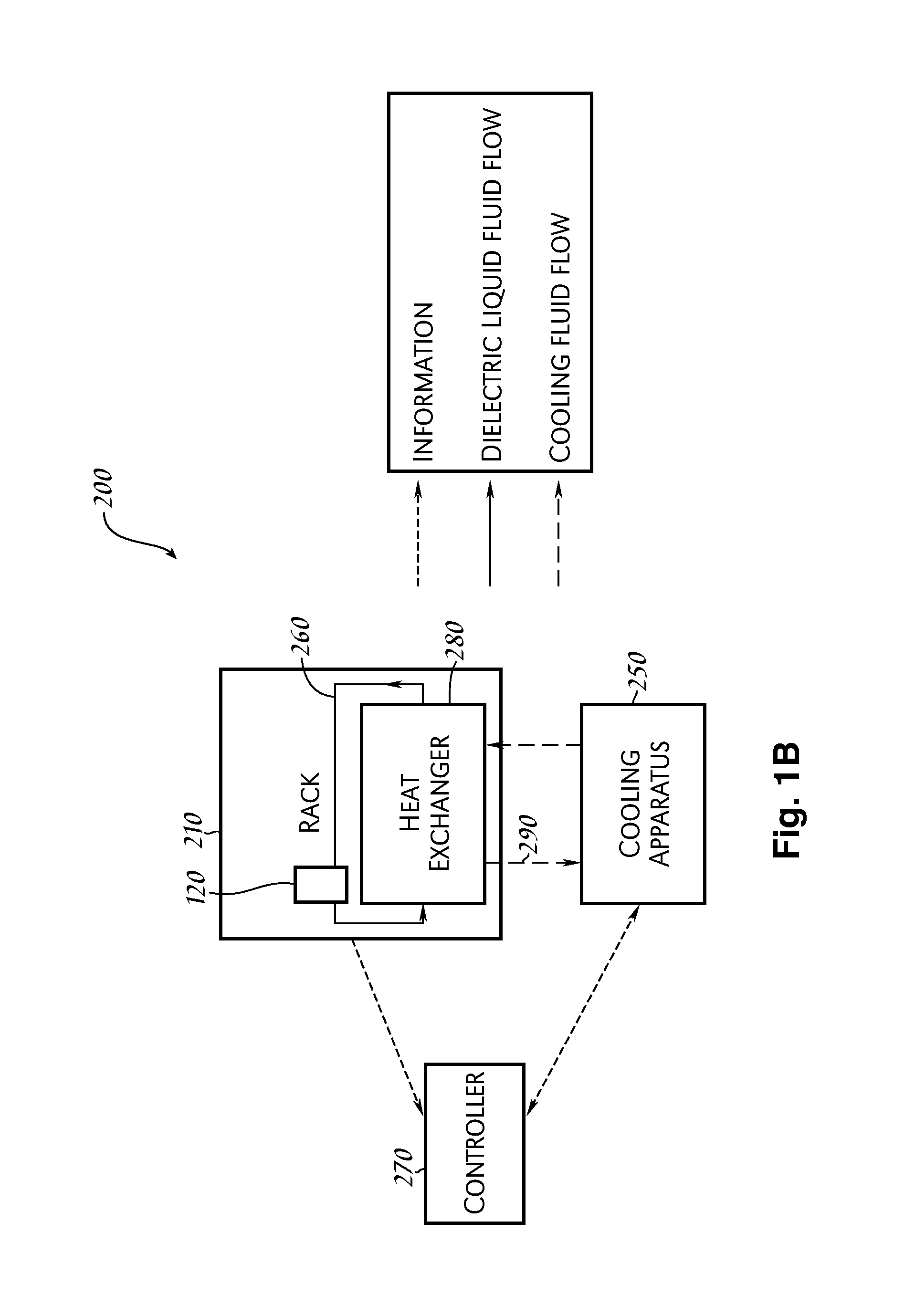Liquid Submerged, Horizontal Computer Server Rack and Systems and Method of Cooling such a Server Rack
- Summary
- Abstract
- Description
- Claims
- Application Information
AI Technical Summary
Benefits of technology
Problems solved by technology
Method used
Image
Examples
Embodiment Construction
[0053]The following describes apparatus, systems, and methods for efficiently cooling computing devices having heat-generating electronic components, such as, for example, independently operable servers at least partially immersed in a dielectric liquid coolant in a tank. The principles of the invention(s) embodied therein and their advantages are best understood by referring to FIGS. 1-17.
[0054]As used herein, the term “server” generally refers to a computing device connected to a computing network and running software configured to receive requests (e.g., a request to access or to store a file, a request to provide computing resources, a request to connect to another client) from client computing devices, includes PDAs and cellular phones, also connected to the computing network. Such servers may also include specialized computing devices called blade servers, network routers, data acquisition equipment, movable disc drive arrays, and other devices commonly associated with data ce...
PUM
| Property | Measurement | Unit |
|---|---|---|
| Temperature | aaaaa | aaaaa |
| Flow rate | aaaaa | aaaaa |
| Volume | aaaaa | aaaaa |
Abstract
Description
Claims
Application Information
 Login to View More
Login to View More - R&D
- Intellectual Property
- Life Sciences
- Materials
- Tech Scout
- Unparalleled Data Quality
- Higher Quality Content
- 60% Fewer Hallucinations
Browse by: Latest US Patents, China's latest patents, Technical Efficacy Thesaurus, Application Domain, Technology Topic, Popular Technical Reports.
© 2025 PatSnap. All rights reserved.Legal|Privacy policy|Modern Slavery Act Transparency Statement|Sitemap|About US| Contact US: help@patsnap.com



